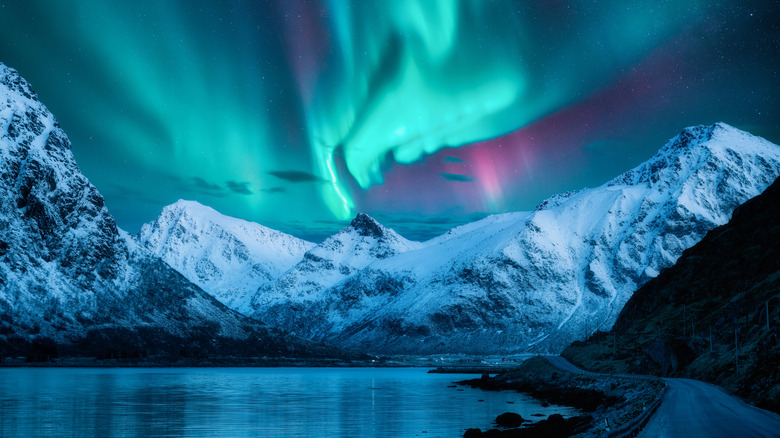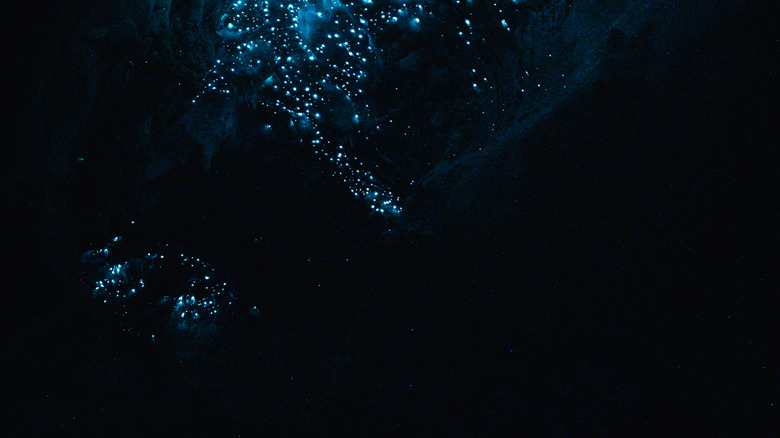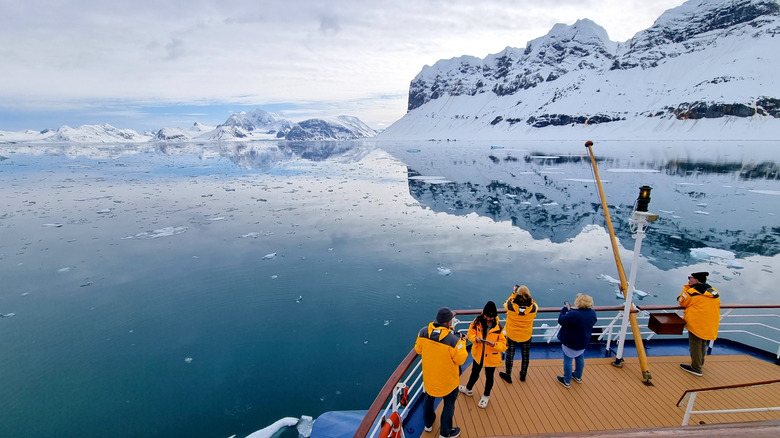The Science Behind Why Snow Glows In The Arctic
The Arctic is a vast region surrounding the northern areas of the world. Often referred to as the Arctic Circle, it includes parts of Russia, Canada, Alaska, Greenland, Iceland, and more. Aside from inhabitants of the area, the Arctic is often the home of scientific researchers studying topics like the thawing global permafrost and the local environment. The sight of small, glowing blue lights in the Arctic snow caught the attention of researchers working near the White Sea.
The first documented testing of these tiny snow lights was by Russian microbiologist Vera Emelianenko. The lights were seen while Emelianenko worked in the region in December of 2021. A sample was taken to find the cause of this glow.
Though the timing of the lights coincided with the holiday season and resembled twinkling decoration lights, they had a natural cause. The blue lights turned out to be Metridia longa, a tiny species of copepod. The glow is caused by their own bioluminescence. This finding was surprising because the Metridia longa shouldn't have been on shore at all.
What caused the glow effect in the snow?
Copepods carry an enzyme known as luciferin. When mixed with oxygen, a chemical reaction causes a bioluminescent effect. Metridia longa specifically secretes this light from glands in their heads and bodies. Their glow is known to researchers in the water, but not on land.
Steven Haddock, Ph.D., is an expert on deep-sea gelatinous zooplankton. He works as a senior scientist and marine biologist for the Monterey Bay Aquarium Research Institute. In regard to the Metridia longa, he told Discovery, "They'll shoot out those two molecules at the same time and form a little puff of light in the water."
Metridia longa are omnivorous inhabitants of the northern seas. They were not supposed to be on land at all. They likely washed ashore, and because they naturally live in the Arctic waters, the freezing snow did not bother them. They emit the bioluminescence as a way to ward off danger, so the new environment of the snow may have startled them enough to create the display.
Can you see the glowing snow yourself?
Since Metridia longa typically glows in the ocean, it is unlikely you will catch this phenomenon personally. However, you can see their impressive bioluminescence by looking for them in the waters of the Arctic Circle.
You can visit places in the Arctic either by yourself or with a tour group. Locations like Alaska and Canada are friendly to travelers if you want to search for the Metridia longa's glow on your own. Some tour groups will arrange nighttime sea tours where you can possibly get a better vantage of this effect.
In a region currently known for the dramatic impact of climate change and revealing melting glaciers, the glowing blue lights in the snow of the Arctic are a unique and beautiful sight. Though Metridia longa were not supposed to be on land at all, their appearance created a fascinating display and helped local researchers learn more about our world.


